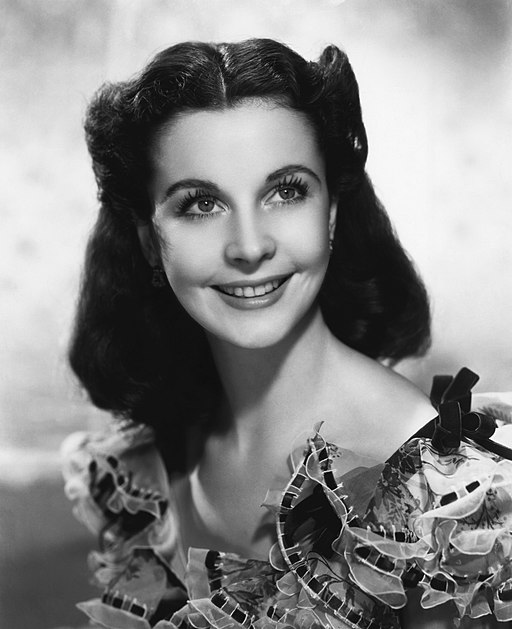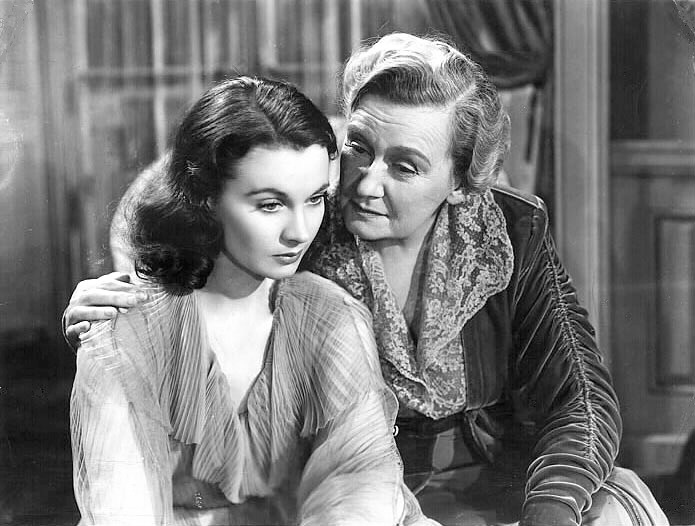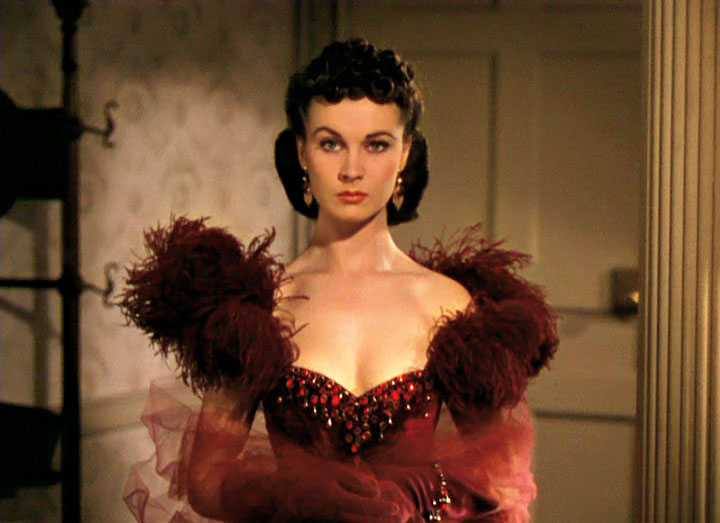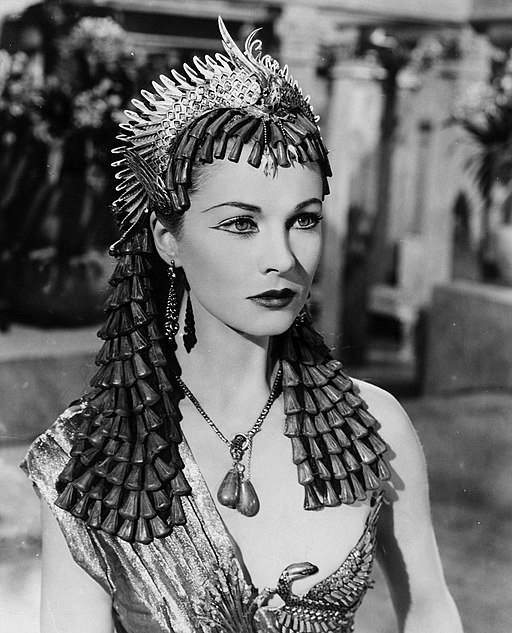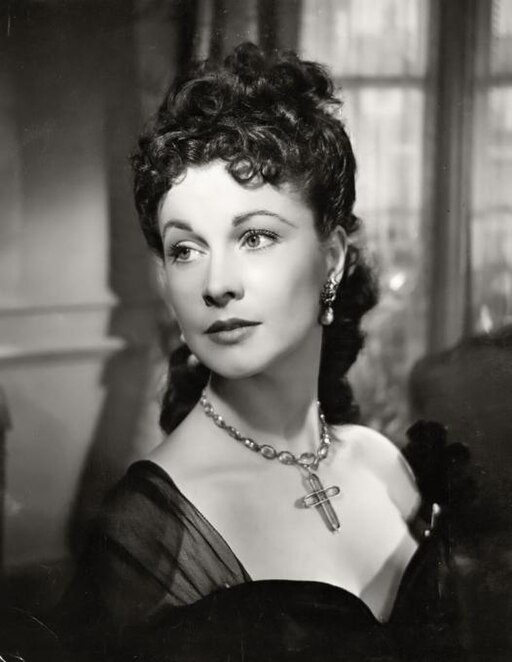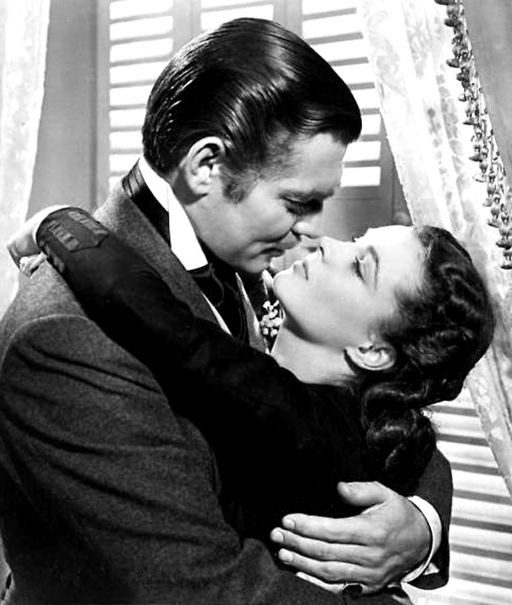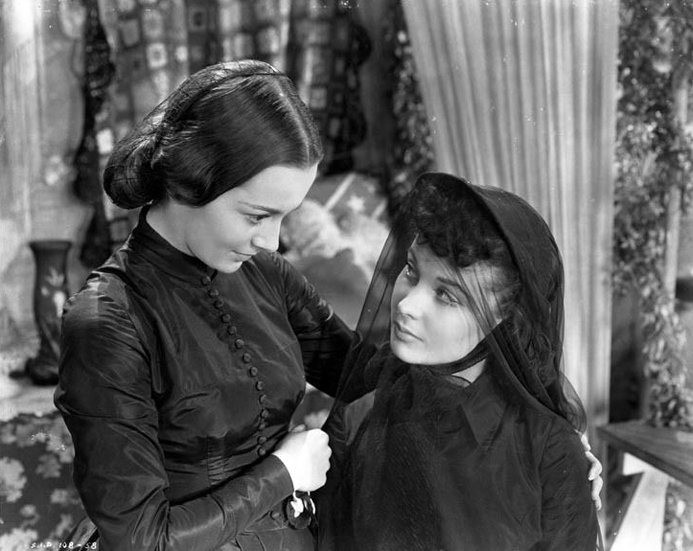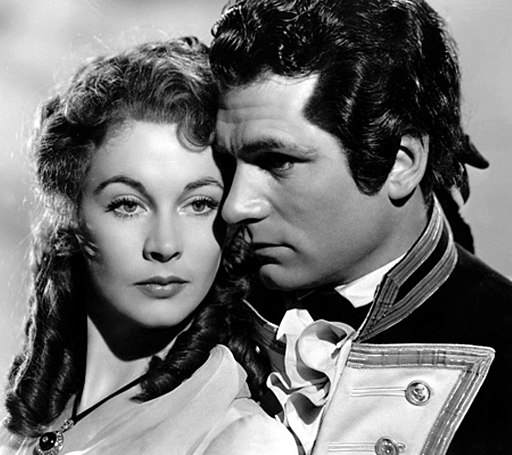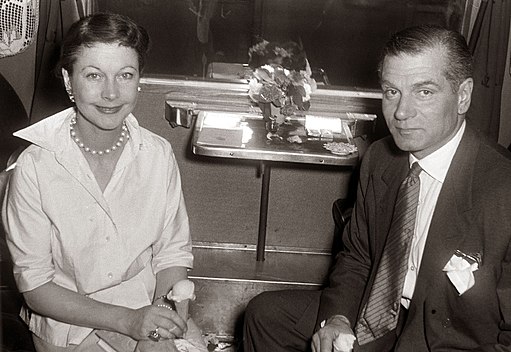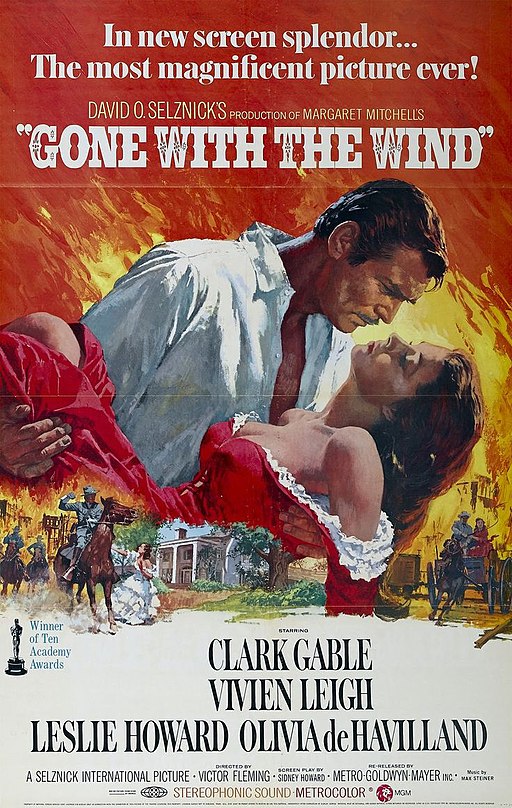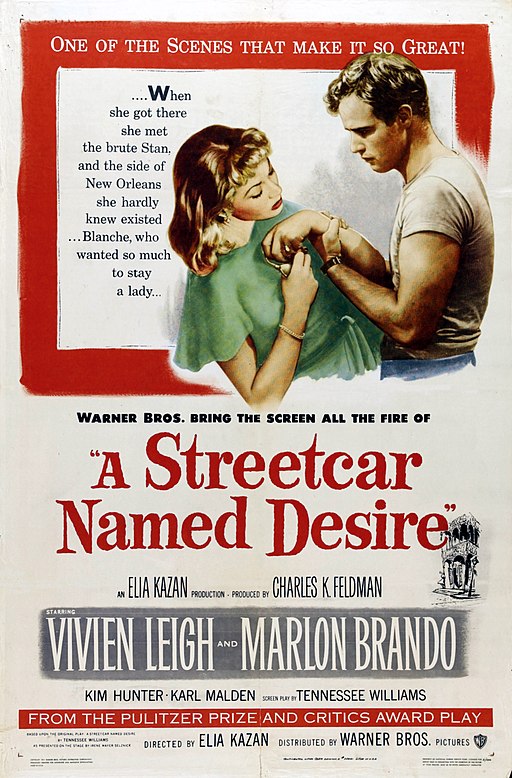Vivien Leigh
back| Full Name | Vivian Mary Hartley |
| Stage Name | Vivien Leigh |
| Born | November 5, 1913 |
| Birthplace | Darjeeling, British India |
| Died | July 8, 1967 |
| Buried | She was cremated, and her ashes were scattered on the pond at her home, Tickerage Mill, near Blackboys, Sussex, England |
| Married to | Herbert Leigh Holman (1932 - 1940) - Laurence Olivier (1940 - 1960) |
| Children | Suzanne Farrington |
| Notable films | Gone with the Wind (1939) - A Streetcar Named Desire (1951) - Anna Karenina (1948) |
Vivien Leigh (1913 – 1967)
The Embodiment of Grace and Tragedy
Vivien Leigh, born Vivian Mary Hartley on November 5, 1913, in Darjeeling, India, was an iconic British actress celebrated for her beauty, poise, and profound acting talent.
She achieved international fame for her role as Scarlett O'Hara in "Gone with the Wind" (1939), a performance that earned her the first of two Best Actress Oscars, the second for Blanche DuBois in "A Streetcar Named Desire" (1951).
Despite her professional success, Leigh's life was shadowed by personal struggles, including her battle with bipolar disorder and chronic tuberculosis.
Related
Biography of Vivien Leigh
Vivien Leigh, born Vivian Mary Hartley, was an English stage and film actress renowned for her beauty, poise, and profound talent. Born on November 5, 1913, in Darjeeling, British India, to British parents, she spent much of her early childhood in different parts of India before moving to England for her education.
Leigh's passion for acting blossomed early, and after attending schools in England and Europe, she enrolled at the Royal Academy of Dramatic Art (RADA) in London. However, her studies were interrupted when she married her first husband, Herbert Leigh Holman, in 1932, and subsequently gave birth to her only child, Suzanne, in 1933.
Her career began to take shape with stage performances in the 1930s. Vivien adopted her stage name, Leigh, from her first husband's surname, combining it with her middle name, Vivian. Her early work included roles in plays and British films, but her breakthrough came with her iconic portrayal of Scarlett O'Hara in "Gone with the Wind" (1939), a role she won after an extensive and highly publicized casting process. This performance brought her international fame and her first Academy Award.
Leigh's second marriage to Laurence Olivier in 1940 marked a significant chapter in both her personal and professional life. The couple became a powerhouse in the theatre and film world, often working together on stage and screen. Despite their professional successes, Leigh's life was marred by periods of ill health, including chronic tuberculosis and struggles with bipolar disorder.
Her portrayal of Blanche DuBois in the film adaptation of "A Streetcar Named Desire" (1951) is considered one of her finest performances, earning her a second Oscar. Leigh's career continued with significant stage and film roles throughout the 1950s and 1960s, although her health issues increasingly affected her work.
Vivien Leigh passed away on July 8, 1967, at the age of 53, from chronic tuberculosis. Her death marked the end of an era for the golden age of Hollywood and British theatre. Leigh's legacy lives on through her unforgettable performances and her enduring status as one of the greatest actresses of her time.
Video Documentary on Vivien Leigh:
Vivien Leigh’s Acting Style:
Vivien Leigh's acting style was marked by a combination of intensity, emotional depth, and a refined elegance, which made her one of the most compelling and celebrated actresses of her era.
Emotional Intensity and Versatility
Leigh was known for her ability to delve deeply into the emotional and psychological complexities of her characters. She had an exceptional talent for portraying a wide range of emotions, from vulnerability and fragility to strength and resilience. This emotional intensity was most vividly displayed in her portrayal of Scarlett O'Hara in "Gone with the Wind" and Blanche DuBois in "A Streetcar Named Desire." In both roles, she showcased her ability to navigate a character's transformation over time, infusing her performances with a sense of authenticity and relatability.
Classic Elegance and Charisma
Leigh possessed a classic beauty and elegance, which she utilized to great effect in her performances. Her poised and graceful demeanor was complemented by an expressive face, capable of conveying complex emotions with subtlety and nuance. This elegance was not just in her visual presentation but also in her voice, which she modulated with skill to convey the right emotion or social standing of her characters.
Strong Stage Presence and Connection to the Audience
Leigh's stage training was evident in her strong screen presence. She had a way of commanding attention in every scene, not just through her visual appearance but through her ability to fully inhabit her characters. Her performances were often described as magnetic, drawing viewers into the emotional world of the character she was portraying.
Mastery of Drama and Tragic Roles
Leigh had a particular affinity for tragic roles and dramas. She excelled in portraying characters who were complex, often flawed, and faced with difficult circumstances. Her performances often highlighted the inner turmoil of her characters, making them deeply human and empathetic. This ability was particularly evident in her portrayal of Blanche DuBois, where she expertly navigated the character's descent into mental instability.
Subtlety and Layered Characterizations
One of Leigh's strengths was her ability to deliver performances that were layered and nuanced. She had a talent for adding subtlety to her characters, making them multifaceted and rich. Even in roles that could have been played in a one-dimensional manner, Leigh found depth and complexity, adding shades of meaning through minor gestures, facial expressions, and vocal inflections.
Conclusion
Vivien Leigh's acting style was a blend of emotional depth, classic elegance, strong stage presence, and a mastery of dramatic roles. Her ability to convey the subtleties and complexities of human emotions made her performances timeless and continues to influence actors and audiences alike. Her legacy in the acting world is marked by her unparalleled ability to bring depth, nuance, and humanity to her characters.
Notable Quotes from Vivien leigh:
Quotes from Her Films
As Scarlett O'Hara in "Gone with the Wind" (1939):
- "After all, tomorrow is another day!"
- "As God is my witness, I'll never be hungry again."
- "I can't think about that right now. If I do, I'll go crazy. I'll think about that tomorrow."
As Blanche DuBois in "A Streetcar Named Desire" (1951):
- "I have always depended on the kindness of strangers."
- "I don't want realism. I want magic!"
Personal Quotes
On Acting:
- "Acting is a masochistic form of exhibitionism. It is not quite the occupation of an adult."
On Life:
- "Life is too short to work so hard."
- "It's much easier to make people cry than to make them laugh."
On Love and Relationships:
- "When you're in love, truly in love, you never have to question it."
Reflective Thoughts:
- "I'm not young. What's wrong with that? It's wonderful what you can do when you're not young and beautiful."
Her Marriages:
Vivien Leigh's personal life, particularly her marriages, was as dramatic and eventful as her career. She was married twice:
1. Herbert Leigh Holman (1932-1940)
- Spouse: Herbert Leigh Holman, a barrister, was her first husband. He was not connected to the film industry, which was quite rare for celebrity marriages of the time.
- Marriage and Family: They married in 1932 when Leigh was just 19 years old. Together, they had one daughter, Suzanne Farrington, born in 1933.
- Dynamics: The marriage was strained by Leigh's ambition and burgeoning career in acting. Holman reportedly preferred a more traditional life, which clashed with Leigh's aspirations and lifestyle.
- End of Marriage: Their marriage deteriorated as Leigh's career took off, especially after she began her affair with Laurence Olivier. They divorced in 1940.
2. Laurence Olivier (1940-1960)
- Spouse: Laurence Olivier, one of the most esteemed actors of the 20th century. Their marriage was one of the most celebrated and scrutinized of its time.
- Beginning: Leigh and Olivier met in 1936 and began an affair while both were still married to other people. Their relationship was a significant scandal, especially given the moral standards of that era.
- Marriage: They married in 1940, soon after their respective divorces were finalized. Their marriage was a partnership both personally and professionally, with numerous joint appearances on stage and screen.
- Challenges: The marriage faced numerous challenges, including Leigh's chronic health issues and struggles with mental illness, as well as the pressures and temptations of their fame. Olivier's increasing frustration with Leigh's health problems strained their relationship.
- End of Marriage: They divorced in 1960, with their careers reportedly taking them in different directions and the strain of Leigh's health issues contributing to the breakdown of their marriage.
Legacy of Her Marriages
- Impact on Career: Both marriages had significant impacts on Leigh's life and career. Her marriage to Holman marked the beginning of her career, while her union with Olivier saw her at the peak of her fame.
- Public and Media Attention: Leigh's relationship with Olivier was a subject of intense media fascination and is still remembered as one of the most high-profile romances in the history of British theatre and Hollywood.
- Personal Struggles: Her personal struggles, especially during her marriage to Olivier, reveal a tumultuous and often tragic side to her life, contrasting sharply with her glamorous public persona.
Awards and Recognition:
Academy Awards (Oscars)
- 1940: Best Actress in a Leading Role (Won)
For her iconic role as Scarlett O'Hara in "Gone with the Wind."
- 1952: Best Actress in a Leading Role (Won)
For her portrayal of Blanche DuBois in "A Streetcar Named Desire."
BAFTA Awards
1964: Best British Actress (Nominated)
For her role in "The Roman Spring of Mrs. Stone."
Tony Awards
1963: Best Actress in a Musical (Nominated)
For her performance in "Tovarich."
New York Film Critics Circle Awards
1939: Best Actress (Won)
For "Gone with the Wind."
Venice Film Festival
1951: Volpi Cup for Best Actress (Won)
For her role in "A Streetcar Named Desire."
Laurel Awards
1962: Golden Laurel, Dramatic Performance, Female (3rd Place)
For "The Roman Spring of Mrs. Stone."
Other Honors and Recognitions
- Vivien Leigh's performances, especially in "Gone with the Wind" and "A Streetcar Named Desire," have left a lasting impact on cinema and are frequently cited in various lists and retrospectives celebrating the greatest film performances of all time.
- Her portrayal of Scarlett O'Hara, in particular, has been recognized as one of the most iconic performances in film history.
Posthumous Honors
- After her passing, Leigh has continued to be celebrated for her contributions to the arts. Various retrospectives, exhibitions, and re-releases of her films have honored her legacy.
- Her influence on the acting industry and the enduring popularity of her films ensure that she remains a significant figure in the history of cinema and theatre.
Movies starring Vivien Leigh:
1935 - "Things Are Looking Up"
This was a minor role for Leigh, where she played a schoolgirl. The film is a musical comedy centered around a schoolteacher who aspires to improve her school.
1935 - "Look Up and Laugh"
Leigh had a small role in this British comedy that starred Gracie Fields. The story revolves around saving a local market from demolition by a greedy developer.
1935 - "Gentlemen's Agreement"
In this drama, Leigh played a supporting role. The film deals with the story of an engineer who creates a new unbreakable glass.
1936 - "The Bashful Bachelor"
This was a minor role for Leigh. The film itself is a light-hearted romantic comedy.
1937 - "Fire Over England"
A significant film for Leigh, playing Cynthia. This historical drama set in the Elizabethan era deals with the rivalry between England and Spain.
1937 - "Dark Journey"
Leigh starred as Madeleine Goddard, a spy during World War I. The film is a mix of romance and espionage.
1937 - "Storm in a Teacup"
Leigh played Victoria Gow, a role that highlighted her comedic abilities. The film is a romantic comedy involving a journalist and a local scandal.
1938 - "A Yank at Oxford"
Leigh played Elsa Craddock in this romantic drama, a story about an American student at Oxford University and his adjustments to life there.
1938 - "St. Martin's Lane" (also known as "Sidewalks of London")
Leigh portrayed Liberty, a street performer, in this drama about the lives of London street entertainers.
1939 - "Gone with the Wind"
Leigh's most famous role as Scarlett O'Hara. This epic historical romance set during the American Civil War and Reconstruction era is renowned for its scale and Leigh's powerful performance.
1940 - "Waterloo Bridge"
Leigh played Myra, a ballerina-turned-prostitute in World War I London, in this romantic drama. It's a tale of tragic love and sacrifice.
1941 - "That Hamilton Woman"
Leigh starred as Emma Hamilton alongside Laurence Olivier. This historical drama tells the story of the famous British Admiral Horatio Nelson and his love affair with Lady Hamilton.
1945 - "Caesar and Cleopatra"
Leigh played Cleopatra in this British Technicolor film, a drama about the relationship between Julius Caesar and Cleopatra.
1948 - "Anna Karenina"
Leigh portrayed the title character in this adaptation of Tolstoy's novel. It's a tragic story of a married aristocrat and her affair with the affluent Count Vronsky.
1951 - "A Streetcar Named Desire"
Leigh's Oscar-winning role as Blanche DuBois. This film adaptation of Tennessee Williams' play is a stark, powerful drama about delusion, reality, and the brutish Stanley Kowalski.
1955 - "The Deep Blue Sea"
Leigh played Hester Collyer in this drama, which centers on the wife of a judge who engages in an affair with a former RAF pilot.
1961 - "The Roman Spring of Mrs. Stone"
Her final film, where Leigh portrayed Karen Stone, a wealthy and aging actress. The story explores themes of love, loneliness, and the pursuit of youth in Rome.

